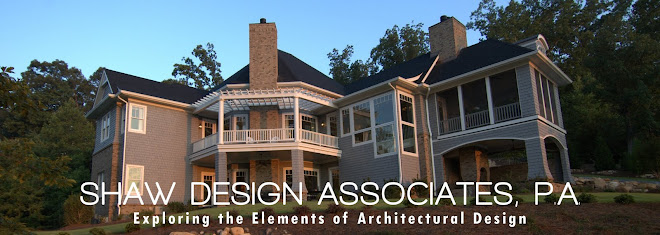Tech Shield remains a favorite product of mine, because it is such a simple, cost effective solution to saving energy.
Saturday, March 7, 2009
Cooler Attics - Radiant Heat Barrier
These days there are many ways one can have a home that is more energy efficient. If you are building a new home in the south, one of the most efficient (as well as comfortable) things to is keep the heat out. There is a great product I found at a home shows a few years ago that I highly recommend. It is a product called Tech Shield. It comes in 4x8 sheets and is applied on top of the roof rafters of your home. The advantage of this product is that it has a thin layer of foil adhered to one side. This may not seem like much but test have shown that this thin layer of foil can cut your monthly energy consumption by 17%. The foil side faces toward the attic and acts as a radiant heat barrier. It is amazing how much heat it keeps out of your attic. When I have specified this product, contractors who are installing it for the first time have been amazed at the effectiveness of the thin layer of foil. In the middle of the summer, they are especially grateful for the coolness in the house. By keeping the heat out of the attic, the air conditioner gets a break, you save money and your home is more comfortable. Check out this great product by clicking on the link above.
Sunday, March 1, 2009
Making a Scene - without getting arrested!!

In a prior post, "Light Layers - how to transform a space" I wrote about the need for layers of lighting. Setting up lighting scenes is done by creatively mixing the 3 different layers of lights to create drama in your living environment. If you are looking for a soft, intimate scene, the lighting level will be lower, emphasis will be on the accent lights and the ambient light will be dimmed. Task lighting is not necessary for this type of scene. Most electricians' solutions to lighting control have each room equipped with its own set of light switches, with each light group on a separate switch. My preference is to link lights that serve the same function, i.e. all of the task lighting or all of the accent lights. To take this even further, you can link accent lights with other accent lights located within visual range of the room you are located. This creates a connected surrounding environment, thus making you more comfortable. It is easiest to set up these scenes during the layout of the electrical plan. Lighting control systems give us the opportunity to preset multiple lighting scenes that can be accessed at the push of a button. Otherwise, manipulating multiple switches will be required each time you want to set up a scene.
In my opinion, creating lighting scenes is one of the most important elements of design.
Light Layers - How to transform a space

One of the key principles of lighting design is to have three layers of lighting. Each layer has a specific role, and if one is left out, the space will end up as ordinary and uninteresting as most spaces that exist.
- Task lighting provides us with enough lighting to accomplish what we set out to do, whether it be reading or doing a craft.
- Ambient lighting emulates what naturally occurs during the day. This light is what surrounds you and doesn't come from a single point source of light.
- Accent lighting is considered the icing on the cake. It adds drama and subtle elegance to a space. This light is what is directed at art work and sculpture and serves only to highlight it's subject.
Outdoor Accents ... Indoor Comfort
During the daylight hours, we are visually connected with the areas surrounding our homes. But as the night sets in, the windows that connect us to the outside become massive black holes which only reflect the interior spaces. Not being able to visually connect with one's surroundings causes a level of discomfort to occur. This feeling is probably generated by our survival instinct. If we look at the worst case scenario, imagine yourself in a dark room with no windows. The feelings generated by such a space can actually drive you crazy. The simplest solution to the problem is to provide accent lighting on landscape features that are in visual range of the interior spaces. These lights need not be bright, they just need to provide enough contrast to the darkness to provide visual connection to the exterior.
Being aware of what surrounds you increases your ability to relax.
Subscribe to:
Posts (Atom)
